Introduction: From Meaningless Computation to Meaningful AI Work
Traditional Proof of Work (PoW) mechanisms, such as those used by the Bitcoin network, excel in security but have long been criticized for their inherent energy waste. The Gonka project transforms this dilemma into an opportunity through its innovative PoW 2.0 mechanism, allowing computational power originally used for meaningless hash calculations to genuinely serve AI reasoning and training tasks.
Before delving into the technical details of PoW 2.0, we need to understand its core design philosophy: redirecting computational resources originally used for maintaining network security to AI computing tasks of actual value, thereby maximizing the utilization of computational resources.
1. The Complete Lifecycle of PoW 2.0: The Precise Arrangement of Epochs
To achieve efficient utilization of computational resources, PoW 2.0 employs a block height-based Epoch management mechanism. Each Epoch has clear phase divisions and time arrangements, ensuring that network security maintenance and AI computing services can proceed in coordination.
1.1 Overview of the Epoch Architecture
Gonka adopts a block height-based Epoch management mechanism, where the length of each Epoch is calculated in terms of block count. Based on the actual network configuration:
Data Source: genesis/genesis-overrides.json#L23-L32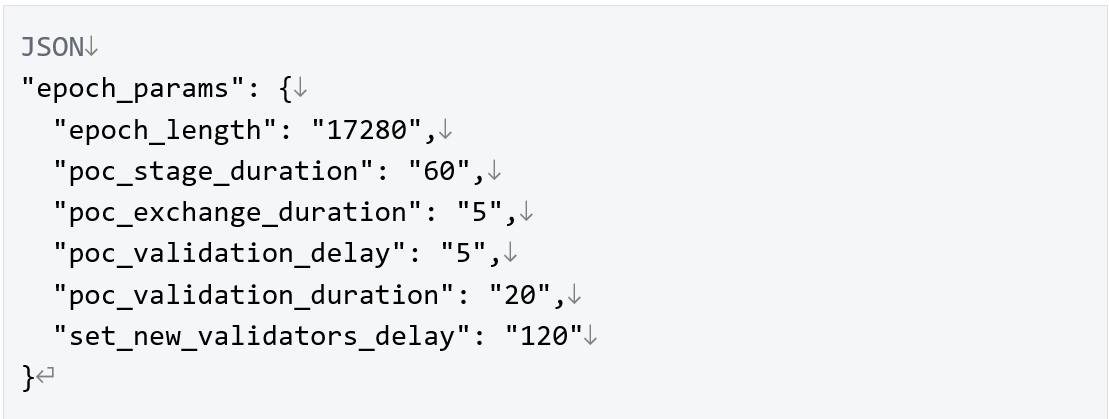
To better understand the operation mechanism of Epochs, we need to grasp their role within the entire network. An Epoch is not only the basic unit of time management but also a key framework for coordinating PoW computation, validation, and AI services.
1.2 Key Phase Divisions of the Lifecycle
The Epoch lifecycle in Gonka is divided into four key phases, achieving efficient utilization of computational power through precise time arrangement:
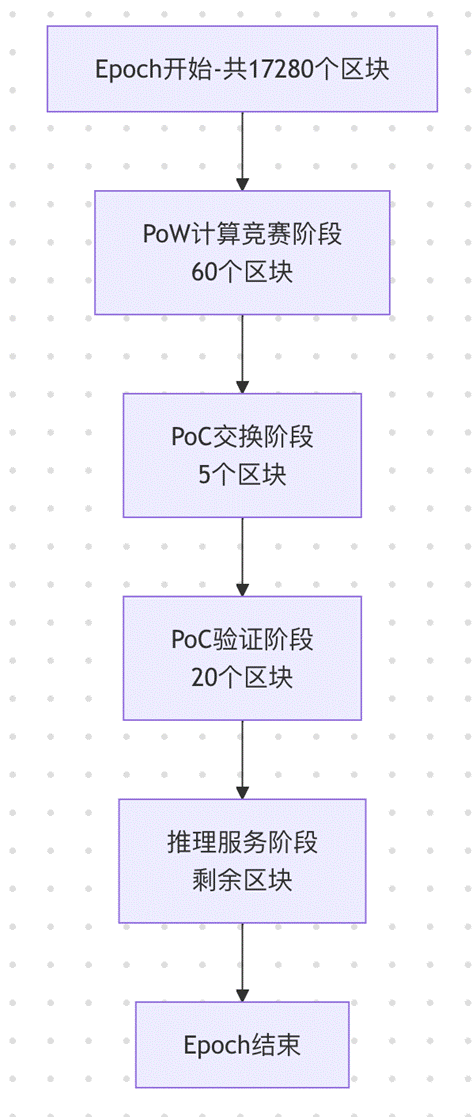
Phase 1: PoW Computation Competition Phase (60 Blocks)
In each Epoch, the system allocates 60 blocks of time specifically for the PoW computation competition (production environment configuration). This phase determines the task allocation weight for nodes in subsequent phases.
During this phase, nodes perform forward propagation calculations based on the Transformer model, measuring workload by the distance between the computation results and the target vector. Results with a distance less than a set threshold are considered valid PoW proofs.
Phase 2: PoC Exchange Phase (5 Blocks)
After the PoW competition concludes, nodes have 5 blocks of time to submit their computation results.
Phase 3: PoC Verification Phase (20 Blocks)
The network verifies the submitted PoW results to ensure the correctness of the computations.
Phase 4: Inference Service Phase (Remaining Time)
Once verification is complete, nodes receive corresponding inference task allocation weights based on their performance in the PoW phase and begin executing inference services.
1.3 Precise Calculation of Time Allocation
Although the system is managed based on block height, for ease of understanding, we can convert it into a time concept:
Data Source: Calculated based on actual network configuration and blockchain characteristics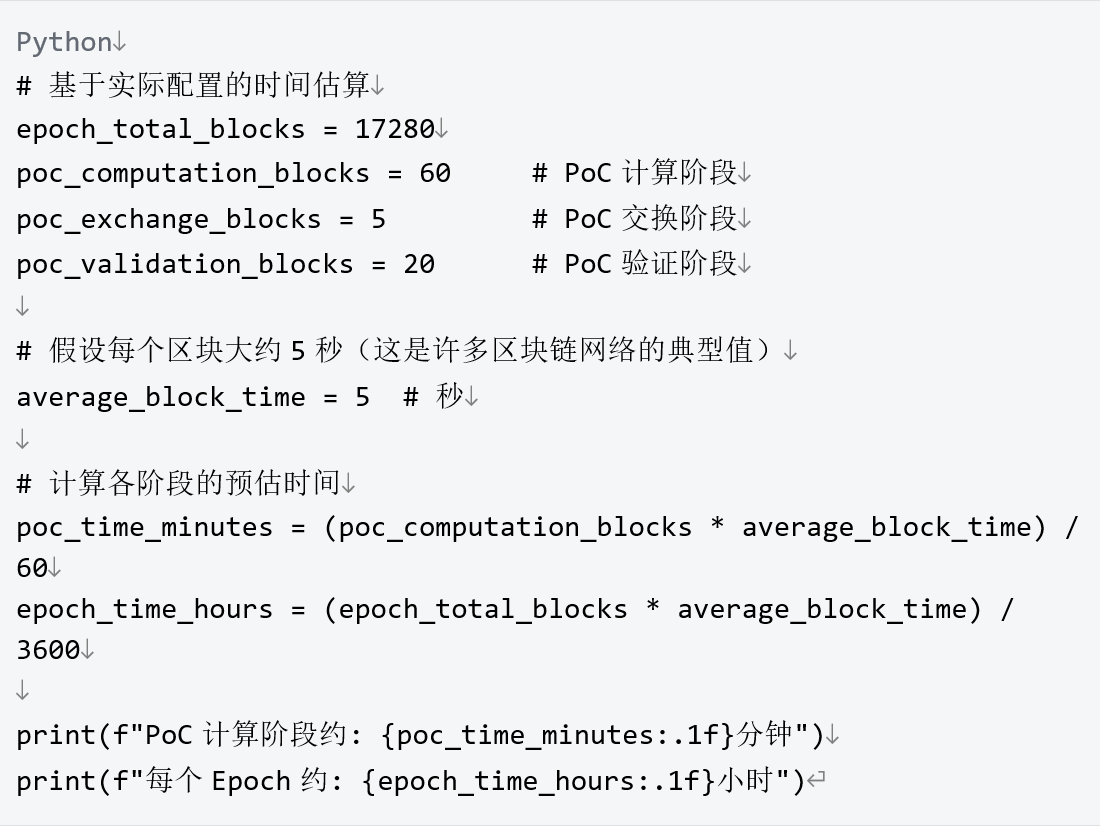
Thus, each epoch lasts approximately 24 hours, with the PoW phase lasting about 6 minutes, and the remaining time allocated for AI reasoning and training services.
2. Randomness and Weight Mechanism in Task Allocation
After understanding the lifecycle of Epochs, we need to further explore how PoW 2.0 achieves fair task distribution through a weight mechanism. This mechanism ensures that high-quality nodes can receive more tasks, creating a virtuous cycle.
2.1 Weight-Driven Random Allocation
Task allocation follows the principle of randomness and proportional weighting. The weight of a node is determined by multiple factors:
Data Source: inference-chain/proto/inference/inference/participant.proto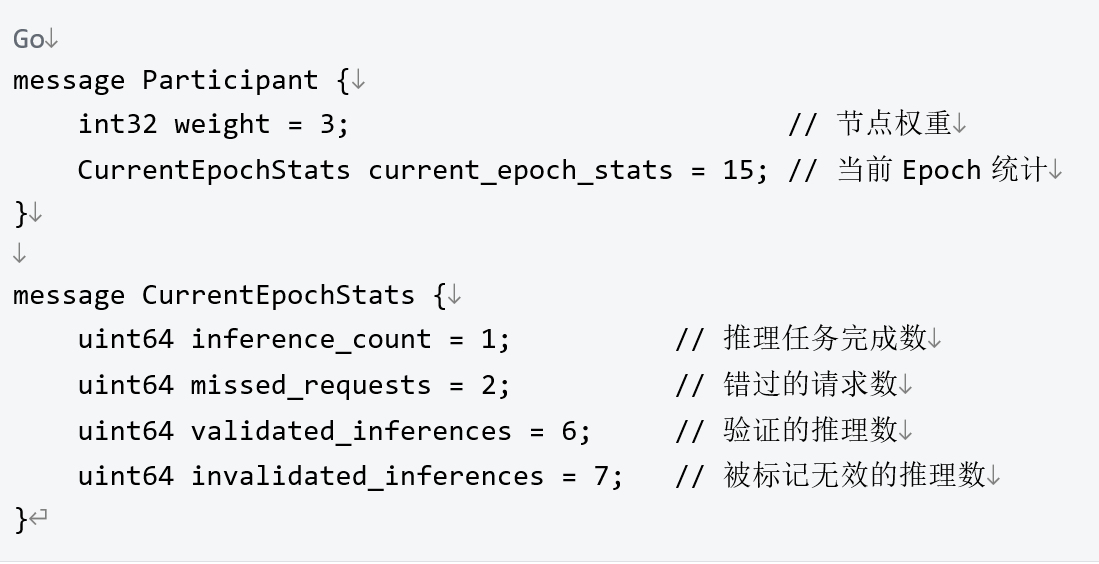
In the Gonka network, node weights are dynamically adjusted, primarily based on the historical performance of the nodes. Nodes with higher weights have a greater probability of being assigned inference tasks, thus earning more rewards.
2.2 Reward Distribution Based on PoC Weight
The reward distribution mechanism is an important means of incentivizing nodes to participate in network maintenance. By distributing rewards based on PoC weight, it ensures that the contributions of nodes are appropriately compensated.
Data Source: proposals/tokenomics-v 2/bitcoin-reward.md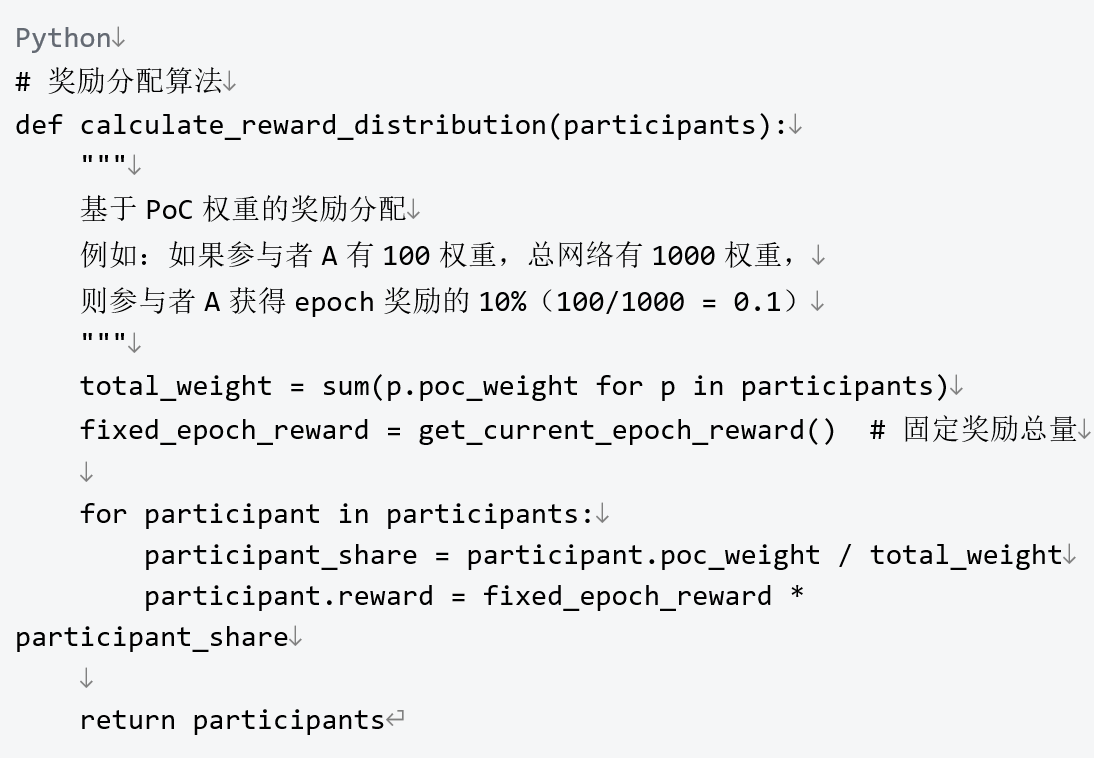
This reward distribution mechanism ensures that nodes receive corresponding rewards based on their performance in the PoW phase, motivating them to actively participate in network maintenance and AI computing tasks.
3. Reward Mechanism and Penalty Strategy
In addition to the task allocation mechanism, the reward and penalty strategies are also key to maintaining the healthy operation of the network. These mechanisms together form the incentive system of PoW 2.0.
3.1 Statistical Significance Testing
According to the technical design, nodes will not receive rewards in the following situations:
• Refusing to execute assigned tasks
• Submitting incorrect results in a statistically significant number of tasks
• Low availability within an Epoch
The network uses statistical significance testing to identify and penalize nodes exhibiting poor behavior, ensuring the healthy operation of the network.
3.2 Real-Time Statistical Monitoring
The system continuously monitors the performance metrics of each node: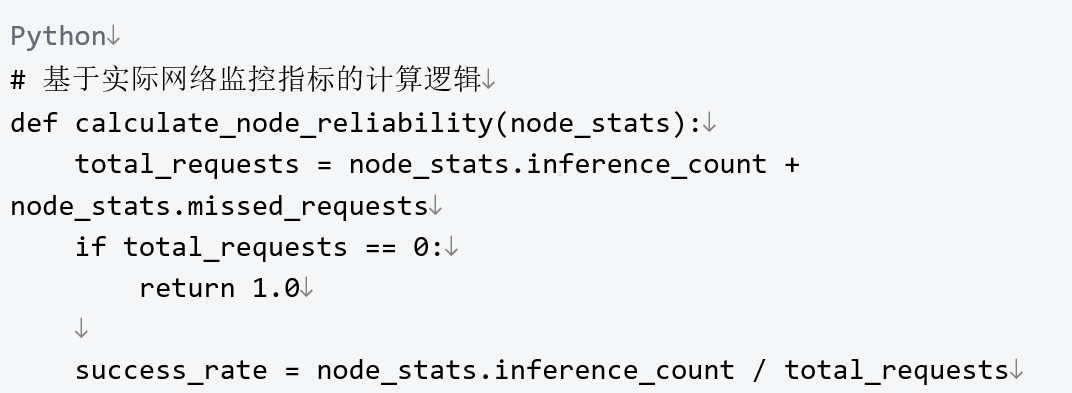

By monitoring node performance in real-time, the system can dynamically adjust node weights, ensuring that high-quality nodes receive more task allocations.
4. Block Generation and Consensus Mechanism: The Independent Foundation of Security
After understanding the incentive mechanisms, we also need to focus on the underlying security mechanisms of PoW 2.0. Block generation and consensus mechanisms are the security foundation of the entire system.
4.1 Continuous and Independent Block Generation Mechanism
Block generation is a continuous and independent process. This process is independent of other network activities such as PoW computation competitions and inference task execution, ensuring the stability and predictability of the network.
The independence of block generation ensures that even if AI computing tasks encounter issues, the blockchain network can still operate normally.
4.2 Layered Consensus Design Based on Tendermint
Gonka adopts a layered consensus mechanism, separating blockchain security from AI computing tasks:
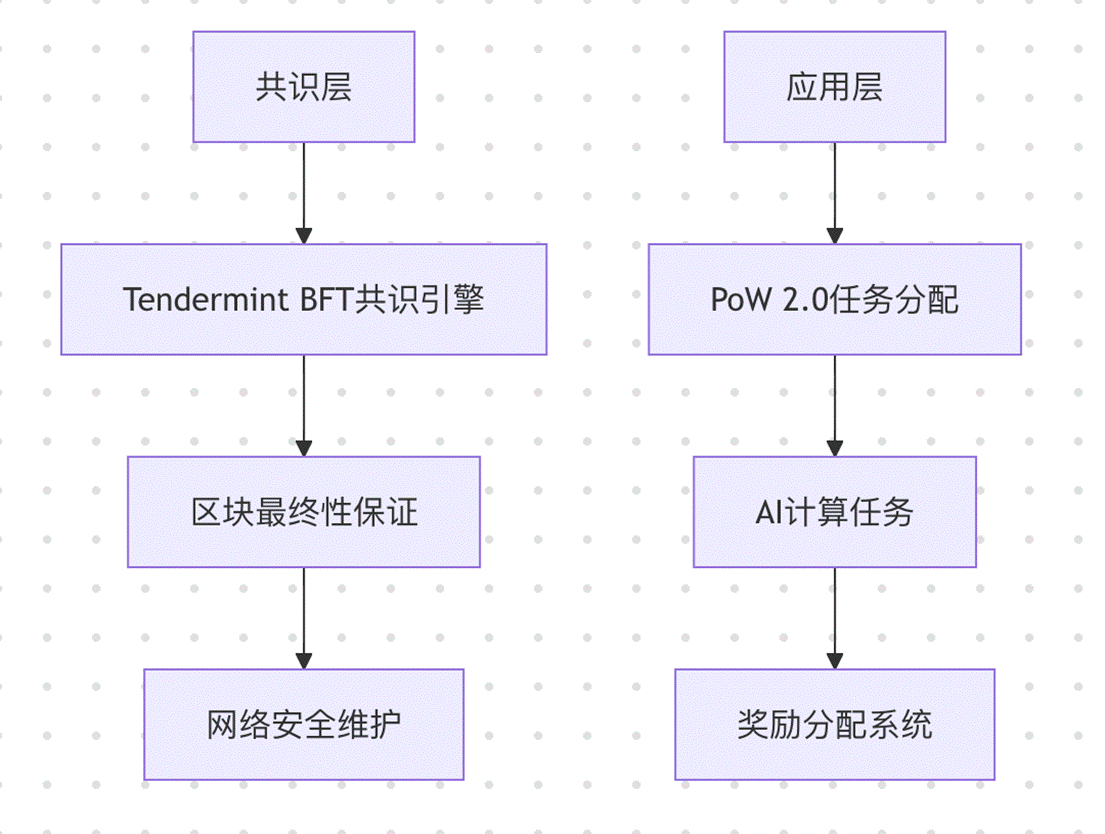
This layered design allows for independent optimization of blockchain security and AI computing tasks, without mutual interference.
4.3 Stability Guarantee of Block Generation
The block generation process is completely independent of application layer activities such as PoW computation and inference tasks. This design ensures:
- Network Activity: Even if AI computing tasks fail, the blockchain can still operate normally
- System Stability: The consensus process does not rely on external computational resources
- Security Assurance: Byzantine fault tolerance algorithms ensure network security
5. Fundamental Differences from Bitcoin Mining
After delving into the technical details, let us compare the fundamental differences between PoW 2.0 and traditional Bitcoin mining from a higher perspective.
5.1 Fundamental Shift in Computational Purpose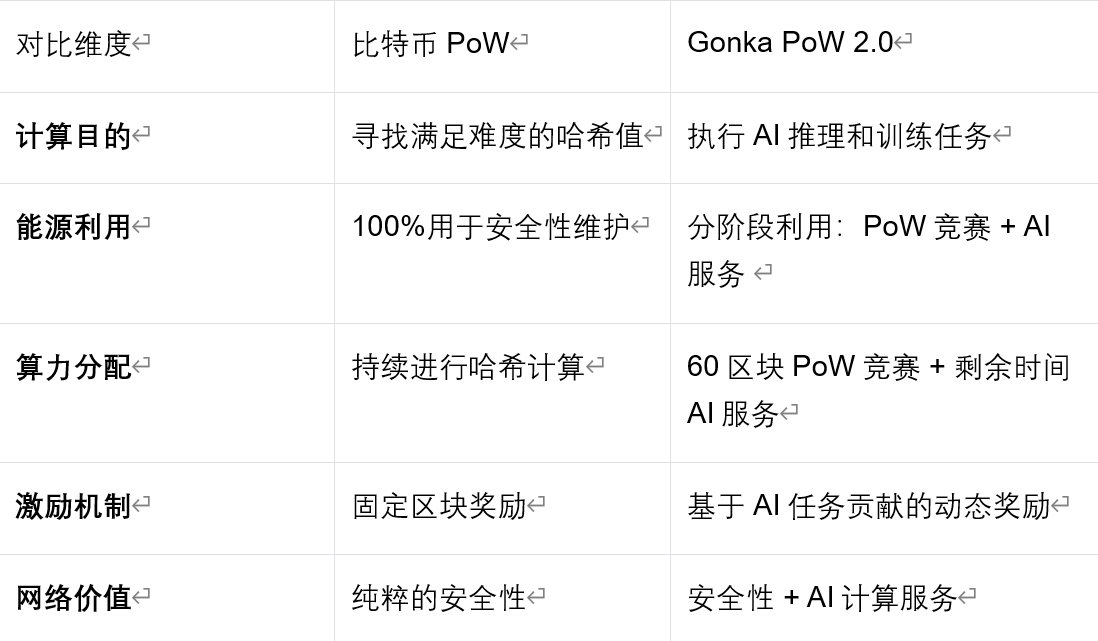
5.2 Innovation in Economic Model
Gonka introduces the concept of utilization rewards, where nodes receive rewards not only for maintaining network security but also for providing valuable AI computing services. 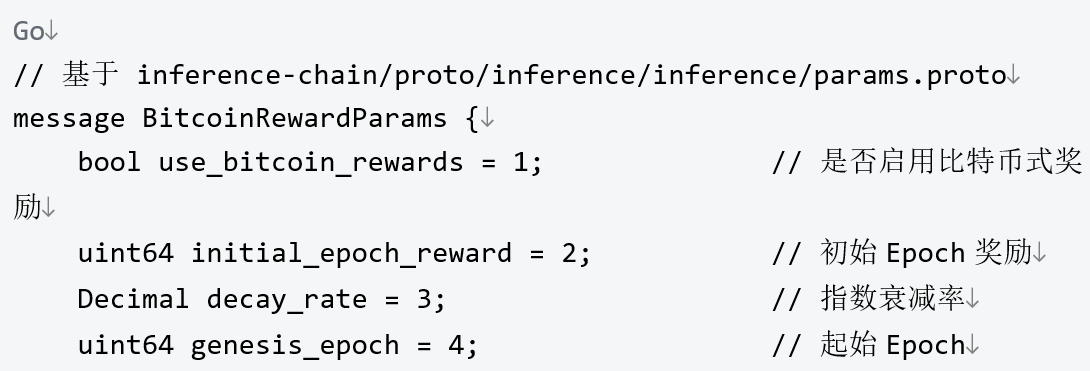

6. In-Depth Analysis of Technical Implementation: The Organic Integration of AI Computing and Blockchain Security
After understanding the overall architecture of PoW 2.0, we need to delve into the specific technical implementation level to understand how AI computing and blockchain security are organically integrated.
6.1 Technical Stack and Architectural Design of PoW Computing
Core Design Philosophy: The technical implementation of Gonka PoW 2.0 replaces traditional hash calculations with meaningful Transformer forward propagation calculations. This design not only maintains the security characteristics of PoW but also directs computational resources towards AI reasoning tasks of actual value.
During the PoW computation phase, each node performs the following steps:
Generate deterministic model weights based on the current block hash
Generate random input vectors
Execute neural network forward propagation calculations
Calculate the Euclidean distance between the output vector and the target vector
Data Source: mlnode/packages/pow/src/pow/compute/compute.py#L138-L180
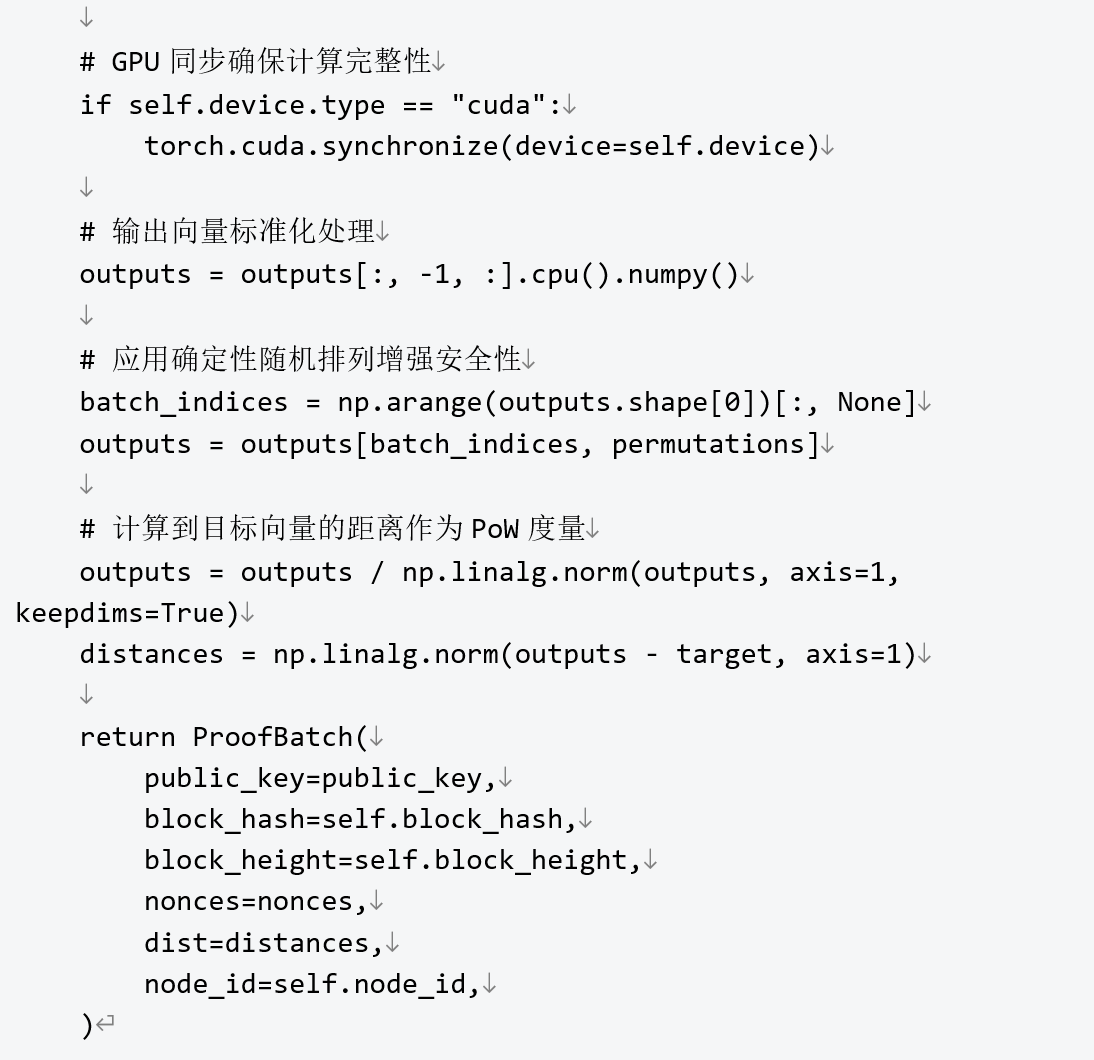
Key Technical Innovations:
Intelligent Computation Metrics: Distance calculations replace hash difficulty, making proof of work based on actual AI computing capabilities
Memory-Intensive Design: The high memory requirements of Transformer computations inherently provide ASIC resistance
Deterministic Randomization: Random permutations driven by block hashes ensure fairness in network computations
Computational Verifiability: The determinism of forward propagation ensures that computation results can be independently verified
6.2 ModelWrapper: Multi-Device Parallel Computing Architecture
Architectural Design: Gonka employs the ModelWrapper architecture to optimize AI computing performance in multi-GPU environments, which is crucial for achieving efficient PoW computations.
The main functions of ModelWrapper include:
Distributed loading and management of models
Automatic allocation and optimization of multiple GPU devices
Performance monitoring and statistics of the computation process
Data Source: mlnode/packages/pow/src/pow/compute/model_init.py#L20-L121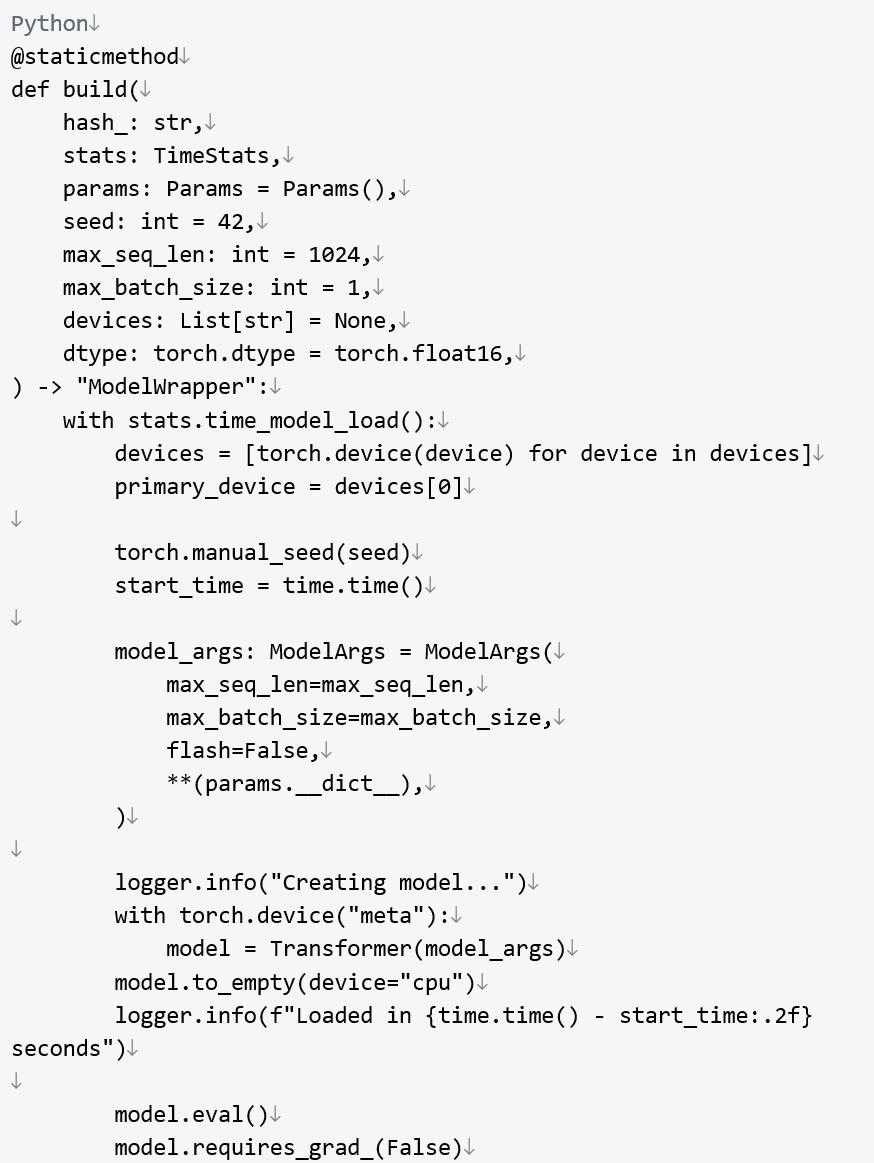
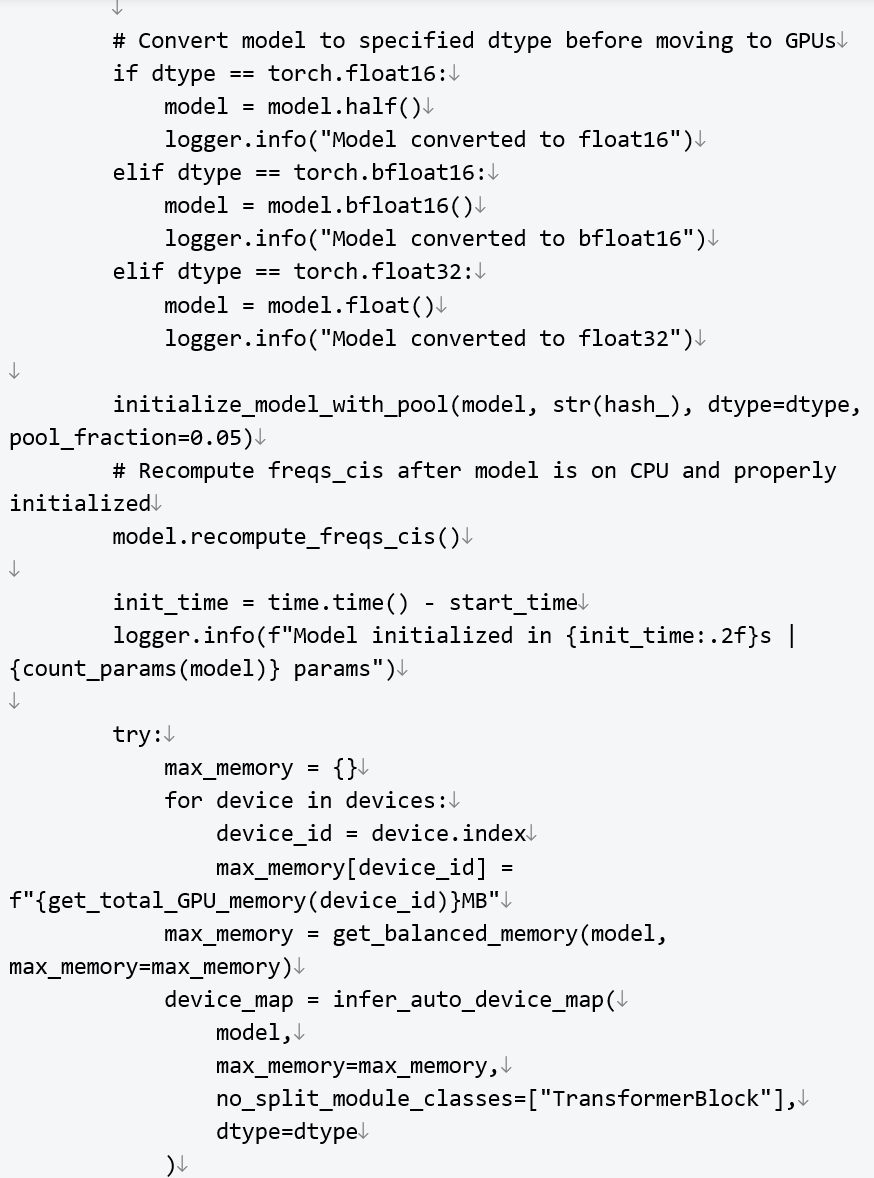

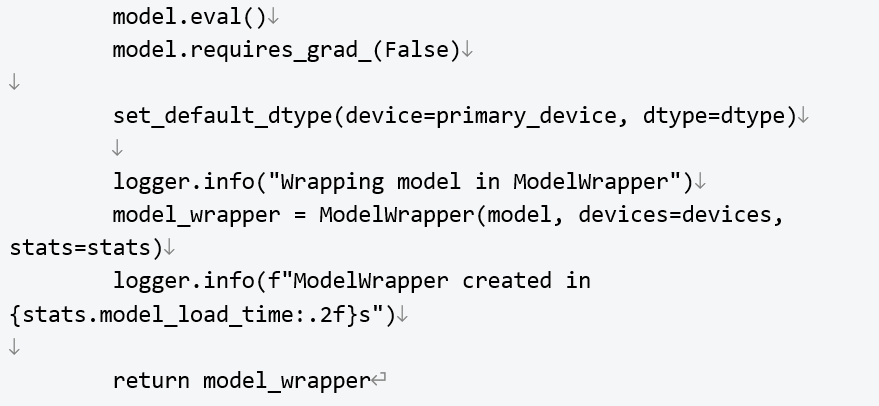
Key Technical Features:
Deterministic Initialization: Weight initialization based on block hashes ensures model consistency across the network
Multi-Device Support: Automatic detection and utilization of multi-GPU environments enhance computational efficiency
Memory Optimization: Using FP 16 precision balances computational accuracy with memory usage
Performance Monitoring: Integrated time statistics ensure that computational performance is observable
7. The Ecological Value of Meaningful Mining
Beyond technical implementation, PoW 2.0 also creates ecological value that benefits multiple parties, distinguishing it from traditional mining.
7.1 Multi-Party Win-Win Ecosystem Design
Gonka PoW 2.0 creates a multi-party win-win ecosystem, reflecting the clever optimization of economic incentives:
Benefits for AI Developers:
- Cost Reduction: Access to lower-cost decentralized computing resources compared to traditional cloud service providers
- Service Diversity: Access to a heterogeneous computing network composed of different hardware configurations
- Avoiding Monopoly: Freedom from dependence on a single cloud service provider
Benefits for Miners (Node Operators):
- Dual Rewards: Computational power investment yields blockchain security rewards + AI service earnings
- Maximized Resource Utilization: A significant amount of time outside the PoW phase is used for valuable AI reasoning and training
- Long-Term Incentives: A continuous reward mechanism based on actual AI service contributions
Benefits for Network Users:
- Innovative Services: Enjoy AI-based decentralized application services
- Cost Advantages: Price benefits from decentralized competition
- Service Reliability: High availability provided by a distributed architecture
Environmental Benefits:
- Improved Energy Efficiency Ratio: Transition from "pure security consumption" to "dual output of security + productivity"
- Resource Optimization: Existing computing resources like GPUs are utilized more fully
- Reduced Carbon Footprint: The same hardware investment generates more social value
7.2 Demonstration Effect of Technological Innovation in the Industry
The success of Gonka will provide important technological demonstrations for the entire blockchain and AI industry:
7.2.1 Impact on the Blockchain Industry
- Evolution of Consensus Mechanisms: Proving that PoW can evolve from "energy-consuming" to "value-creating"
- Sustainable Development Pathways: Providing environmentally friendly technical solutions for other blockchain projects
- Expansion of Application Scenarios: Opening up new application fields for deep integration of blockchain and AI
7.2.2 Impact on the AI Industry
- Democratization of Computing Resources: Breaking the centralized monopoly in AI computing
- Cost Structure Optimization: Providing more economical computing resources for AI development
- Acceleration of Innovation: Lowering the resource threshold for AI startups and research and development
Conclusion: A Historic Shift in Computational Paradigms
Gonka PoW 2.0 represents a historic shift in blockchain consensus mechanisms, with its core elements including:
Core Innovative Features
- Complete Lifecycle Design:
- 24-Hour Epoch Cycle: Precisely managed based on 17,280 blocks
- 6-Minute PoW Phase: A weight competition period of only 60 blocks
- Remaining Time Focused on AI: Over 99% of the time is dedicated to LLM reasoning and training
- Task Allocation Mechanism:
- Random and Proportional by Weight: Ensuring fair distribution of network resources
- Statistical Significance Testing: Nodes that refuse or incorrectly execute tasks will not receive rewards
- Rewards Based on PoC Weight: Rewards are distributed according to computational contribution ratios
- Independence of Block Generation:
- Continuous and Independent Processes: Each block has a relatively fixed generation time
- Independent of AI Computing: Blockchain security does not rely on the state of AI computing
- Tendermint BFT Consensus: Provides Byzantine fault tolerance and instant finality
Innovations in Technology and Economic Models
Phased Utilization of Computational Power: Transforming traditional 24/7 meaningless PoW computations into phased valuable services
Maximization of Economic Value: The same hardware investment generates dual value in security and AI computing
Sustainable Development: Fundamentally addressing the environmental impact of blockchain
Technological Synergy: The organic combination of blockchain security and AI computing capabilities
Future Impact and Significance
With the continuous growth of AI demand and the increasing awareness of environmental protection, the concept of "meaningful mining" represented by Gonka PoW 2.0 will become an important direction for the development of blockchain technology. This is not only a technological breakthrough but also an exploration of sustainable development models for the entire digital economy.
By transforming traditional "energy-consuming security" into "value-creating security," Gonka opens up a new development path for blockchain technology, ensuring that every unit of computational power invested generates real social value.
Note: This article is based on the actual code implementation and technical documentation of the Gonka project, with all code examples sourced from the project's official code repository.
About Gonka.ai
Gonka is a decentralized network aimed at providing efficient AI computing power, designed to maximize the utilization of global GPU computing resources for meaningful AI workloads. By eliminating centralized gatekeepers, Gonka offers developers and researchers permissionless access to computing resources while rewarding all participants through its native token GNK.
Gonka is incubated by the American AI developer Product Science Inc., founded by seasoned professionals from the Web 2 industry, including former Snap Inc. core product director Libermans siblings. In 2023, it successfully raised $18 million, with investors including Coatue Management (investors in OpenAI), Slow Ventures (investors in Solana), K 5, Insight, and Benchmark partners. Early contributors to the project include well-known leading companies in the Web 2-Web 3 space such as 6 blocks, Hard Yaka, Gcore, and Bitfury.
Official Website | Github | X | Discord | White Paper | Economic Model | User Manual
免责声明:本文章仅代表作者个人观点,不代表本平台的立场和观点。本文章仅供信息分享,不构成对任何人的任何投资建议。用户与作者之间的任何争议,与本平台无关。如网页中刊载的文章或图片涉及侵权,请提供相关的权利证明和身份证明发送邮件到support@aicoin.com,本平台相关工作人员将会进行核查。




